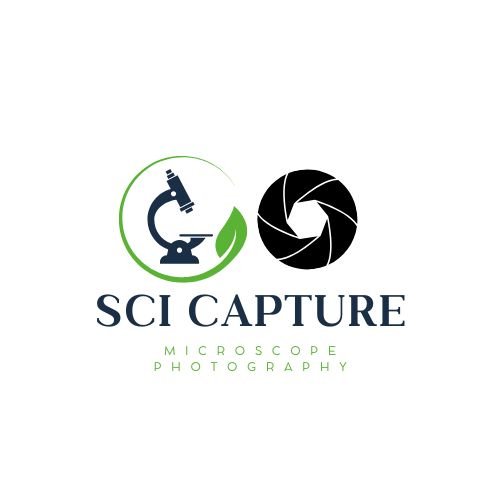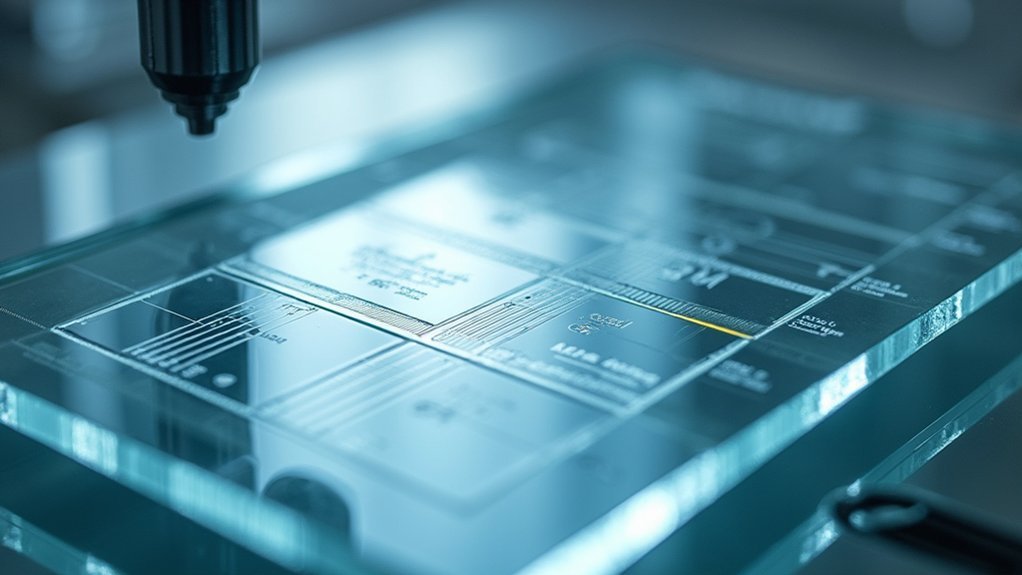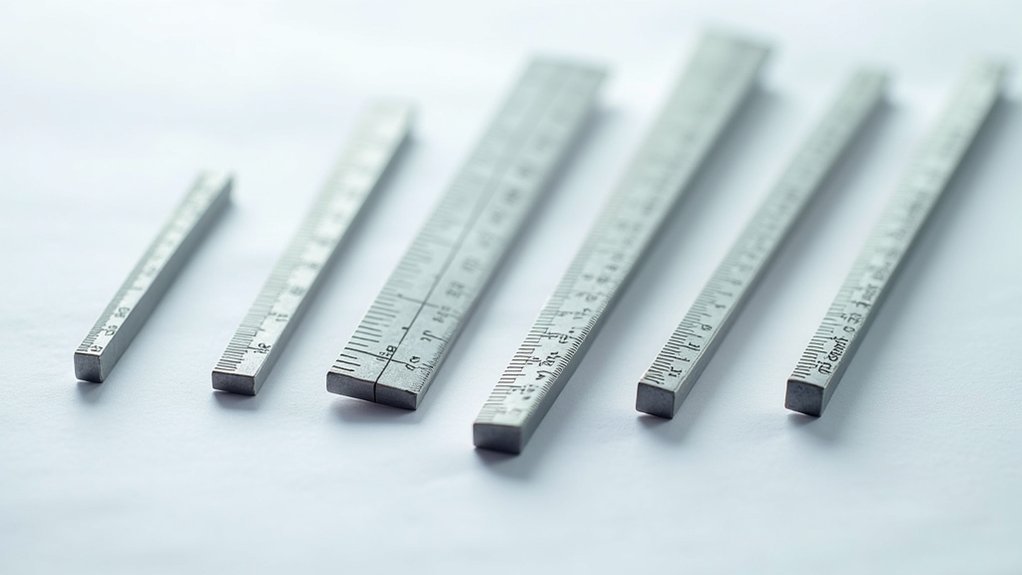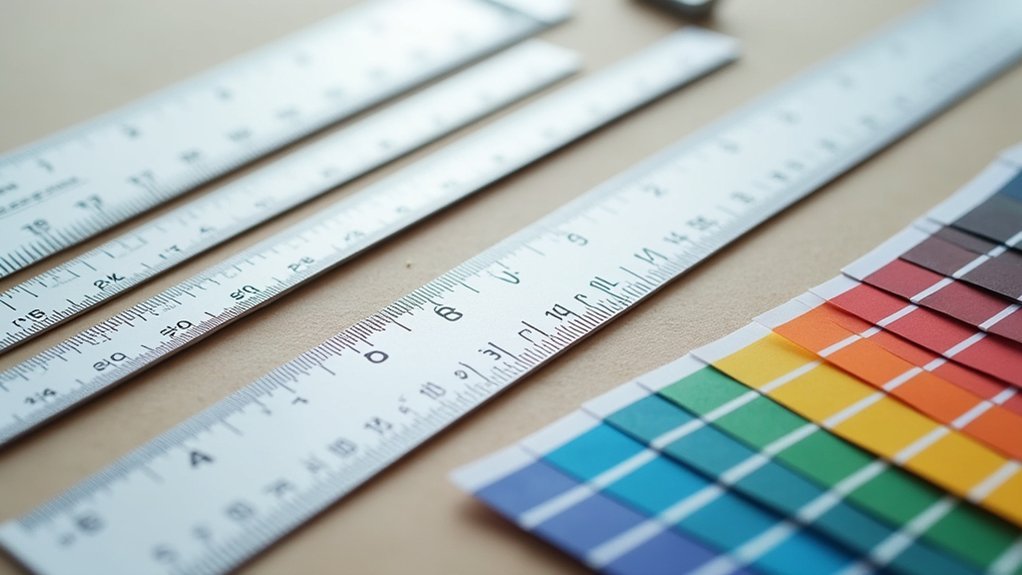You'll find that choosing the right digital eyepiece for your microscope can greatly impact your research, education, or professional work. Today's market offers numerous options, from basic USB cameras to sophisticated Wi-Fi-enabled devices with advanced imaging capabilities. Whether you're a student documenting lab work or a professional requiring precise measurements, understanding the key differences between top digital eyepieces will help you make an informed investment that matches your specific needs.
Swift 5.0 Megapixel Digital Camera for Microscopes
The Swift 5.0 Megapixel Digital Camera stands out as an entry-level choice for educational environments and hobbyist microscopists, while its USB 2.0 connectivity and broad Windows compatibility make setup hassle-free.
You'll capture color photos and livestream videos at 10-15 fps, though the field of view is limited to about 1/4 of what you'd see through the eyepiece. The included Windows software offers valuable features like image stitching and measurement tools, but Mac users might need alternative apps. While it's adequate for basic microscopy, you'll want to explore other options for professional lab work, as the camera's performance and image quality may not meet advanced research requirements.
Best For: Hobbyists, students, and educational settings where basic microscopy imaging is needed and professional-grade output isn't required.
Pros:
- Easy setup with plug-and-play USB 2.0 connectivity and broad Windows compatibility
- Includes comprehensive Windows software with useful features like image stitching and measurement tools
- Affordable entry-level option with decent 5MP resolution for basic microscopy needs
Cons:
- Limited field of view (only 25% of what's visible through eyepiece)
- Relatively slow frame rate (10-15 fps) may not be suitable for capturing dynamic subjects
- Software compatibility issues for Mac users and potential performance limitations for professional work
Celestron 5MP CMOS Digital USB Microscope Imager
Science educators and lab technicians seeking a digital upgrade will find the Celestron 5MP CMOS Digital USB Microscope Imager to be a practical solution for converting traditional microscopes into digital devices. You'll get high-resolution images and 30fps video through its 5MP CMOS sensor, which fits 23mm or 30mm eyepiece tubes.
While setup is straightforward – just replace your eyepiece and connect via USB – you might face some challenges. The software can be temperamental, with exposure and white balance issues. You'll notice higher magnification compared to traditional eyepieces, and the included software may require frequent reconfiguration. Despite these limitations, it's an affordable entry point for basic digital microscopy needs.
Best For: Entry-level educators, students, and hobbyists looking for an affordable way to digitize their existing microscopes for basic digital microscopy and educational demonstrations.
Pros:
- Easy installation process – simply replaces existing eyepiece and connects via USB
- High-resolution 5MP CMOS sensor capable of capturing detailed images and 30fps video
- Compatible with both Windows and Mac OS X systems with included software
Cons:
- Software has significant limitations with exposure control and white balance issues
- Higher magnification compared to traditional eyepieces may make viewing challenging
- Requires frequent software reconfiguration and can be slow to operate
Swift 5.0 Megapixel Digital Camera for Microscopes
Aspiring microscopists and educators will find Swift's 5.0 Megapixel Digital Camera an accessible entry point into digital microscopy. This compact USB 2.0 camera captures color photos and live videos, though you'll notice a narrower field of view compared to direct eyepiece observation.
While the Windows-compatible software offers helpful features like image stitching and measurement tools, Mac users may need alternative applications. You'll get decent image quality for basic observations, but the 10-15 fps frame rate might limit dynamic subject viewing. If you're seeking a budget-friendly option for educational use, this camera delivers reasonable value—just don't expect professional-grade performance.
Best For: Entry-level microscopists, students, and educators seeking an affordable digital camera solution for basic microscopy applications.
Pros:
- Easy to set up and use with USB 2.0 connectivity
- Includes comprehensive Windows software with measurement and image editing tools
- Compact and lightweight design fits most compound and stereo microscopes
Cons:
- Limited field of view compared to direct eyepiece observation
- Software compatibility issues for Mac users
- Lower frame rate (10-15 fps) may not be suitable for capturing fast-moving specimens
Swift Digital Camera for Microscopes (1.3 Megapixel)
Hobbyists and students seeking an affordable entry into microscope photography will find value in Swift's 1.3 Megapixel Digital Camera. For under $50, you'll get a compact USB 2.0 camera that captures color photos and livestreams video through your microscope eyepiece.
While it includes Windows-compatible software for image stitching, annotation, and measurement, you might face challenges with the miniCD installation. The camera's small field of view and color distortion can limit your work with larger specimens. If you're planning serious microscopic research, you'll want to contemplate upgrading to a higher resolution model, but for basic observations and learning photomicrography, this camera serves as a practical starting point.
Best For: Beginner microscope enthusiasts and students seeking an affordable introduction to photomicrography without requiring professional-grade image quality.
Pros:
- Budget-friendly price point under $50 makes it accessible for hobbyists and students
- Compatible with both Windows and Mac operating systems
- Includes software for advanced features like image stitching and measurements
Cons:
- Limited 1.3 megapixel resolution may not be sufficient for detailed microscopic work
- Software installation issues with miniCD and confusing directions
- Small field of view and color distortion can restrict usage with larger specimens
Plugable Digital Microscope with USB/USB-C and Flexible Arm Stand
The Plugable Digital Microscope stands out as a versatile choice for students and professionals who need reliable magnification without breaking the bank. You'll get impressive 2MP resolution with magnification ranging from 60x to 250x, perfect for examining coins, electronics, or specimens.
The microscope's flexible arm stand and built-in LED halo light with adjustable brightness let you position and illuminate your subjects precisely. It's compatible with most operating systems through USB/USB-C connectivity, and you can capture images, videos, or time-lapse sequences. While the stand might show slight movement at maximum magnification, the microscope's overall performance and broad compatibility make it a smart investment for your digital imaging needs.
Best For: Students, hobbyists, and electronics enthusiasts seeking an affordable digital microscope with good image quality and versatile connectivity options.
Pros:
- Broad compatibility across multiple operating systems and devices through USB/USB-C
- Built-in adjustable LED lighting system with flexible arm stand for precise positioning
- User-friendly plug-and-play functionality with ability to capture images, videos, and time-lapse
Cons:
- Limited magnification options with fixed settings at 60x and 250x
- Slight stability issues when using maximum magnification
- 2MP resolution may be insufficient for professional-grade microscopy work
SVBONY SV189 Digital Microscope Camera (1.3MP USB2.0)
Students and educators seeking an entry-level digital microscope camera will find the SVBONY SV189 a practical choice. This 1.3MP USB2.0 camera fits microscopes with 23mm or 30mm photo ports and delivers color photos and videos of your specimens.
You'll get essential software for editing, measurement, and calibration, compatible with both Mac and Windows systems. The package includes adapters, a USB cable, and detailed instructions. While users praise its ease of use and value for beginners, you might notice some limitations with the field of view and image quality. It's ranked #95 in Lab Handheld Digital Microscopes, making it a budget-friendly option for basic microscopy needs.
Best For: Entry-level microscopists, students, and educators seeking an affordable digital camera solution for basic specimen documentation and educational purposes.
Pros:
- Easy to set up and use with included software and adapters
- Compatible with both Windows and Mac operating systems
- Affordable price point makes it accessible for educational settings
Cons:
- Limited 1.3MP resolution may not satisfy advanced imaging needs
- Some users report issues with field of view and lens size matching
- Software installation problems reported on Windows 10 systems
Macro Microscope Digital Fixed Focus 500x Magnification with IPS Screen
Digital enthusiasts seeking a portable microscope solution will appreciate the Macro Microscope Digital Fixed Focus with its 500x magnification and built-in 2.0-inch IPS screen.
You'll find this device useful for examining circuit boards, jewelry, and plants with its 1920x1080P resolution and adjustable LED lighting. The rechargeable battery offers 1.5 hours of continuous use, and it's compatible with Windows and Mac systems via Type-C connection.
While you can store up to 100 photos on the device, they can't be downloaded. The fixed focal length might limit your versatility, and you'll need practice to achieve peak focus. Despite some connectivity issues, it's a decent starter tool for basic microscopy needs.
Best For: Hobbyists and beginners seeking a portable digital microscope for basic inspection of small objects, circuit boards, and plant specimens.
Pros:
- High-resolution display (1920x1080P) with built-in 2.0-inch IPS screen for clear viewing
- Convenient portable design with rechargeable battery lasting 1.5 hours
- Built-in adjustable LED lighting system with 8 lights for optimal illumination
Cons:
- Fixed focal length limits versatility and depth of field capabilities
- Photos cannot be downloaded from the device
- Some users report connectivity issues and difficulties with focus control
AmScope 5.0 MP USB Digital Microscope Camera with Calibration Kit
Designed for versatile microscopy applications, AmScope's 5.0 MP USB camera offers three key advantages that make it ideal for hobbyists and educators. You'll get universal compatibility with its adaptors fitting 23mm, 30mm, and 30.5mm eyepieces, extensive software that includes measurement tools and image stacking features, and a calibration kit for precise measurements at various magnifications.
You'll find the camera easy to set up with its single USB cable for power and data transfer. While you might experience some lag at high magnifications, the camera's ability to capture both still images and live video makes it a practical choice for basic histological studies and educational demonstrations.
Best For: This microscope camera is best suited for hobbyists, educators, and students who need a versatile digital imaging solution for basic microscopy work and educational demonstrations.
Pros:
- Universal compatibility with multiple eyepiece sizes (23mm, 30mm, and 30.5mm) through included adapters
- Comprehensive software package with measurement tools, image stacking, and processing features
- Simple setup with single USB cable for both power and data transfer
Cons:
- May experience lag and performance issues at high magnifications
- Limited to USB 2.0, resulting in slower data transfer rates
- Software has a learning curve and Mac/Linux versions have reduced functionality
Celestron LCD Digital Microscope II with Built-in Camera
Laboratory enthusiasts seeking a complete digital microscopy solution will find the Celestron LCD Digital Microscope II a compelling choice. This 5MP camera-equipped microscope offers magnification up to 1600x and features a 3.5" LCD screen for real-time viewing.
You'll appreciate the thorough package, including a 1GB micro SD card, carrying case, and prepared slides. While it's suitable for educational use, you'll need to work around some limitations like imprecise focus controls and inconsistent illumination at higher magnifications. The 2-year warranty and US-based technical support provide peace of mind, though some users report quality control issues that may require product exchanges.
Best For: Educational institutions, students, and hobbyists seeking an all-in-one digital microscope solution with image capture capabilities at an entry-level price point.
Pros:
- Complete package with carrying case, prepared slides, and SD card included
- Built-in 5MP camera with easy image/video capture functionality
- Portable design with comprehensive international power adapter options
Cons:
- Imprecise focus controls and difficulty achieving sharp focus at high magnifications
- Low LCD screen resolution affects viewing quality
- Quality control issues reported, including stage droop and camera artifacts
Skybasic Digital WiFi Microscope (50X-1000X Magnification)
The Skybasic Digital WiFi Microscope stands out as a versatile choice for hobbyists, students, and casual explorers who need a portable microscope that won't break the bank. You'll get impressive magnification from 50X to 1000X, with a 2MP HD CMOS sensor that captures 1080p images on smartphones and 720p on computers.
Connect to your device via WiFi or USB, and use the Max-see app for Android/iOS or compatible software for Windows/Mac. The unit features 8 adjustable LED lights and a one-button operation for photos and videos. While the adjustable stand can be wobbly, the microscope's compact size and wireless capabilities make it ideal for field work and educational settings.
Best For: Amateur scientists, students, and hobbyists seeking an affordable, portable digital microscope for basic exploration and educational purposes.
Pros:
- High magnification range (50X-1000X) with good image quality and adjustable LED lighting
- Versatile connectivity options with both WiFi and USB compatibility for multiple devices
- User-friendly design with simple one-button operation and portable form factor
Cons:
- Stand stability issues can make precise focusing challenging
- WiFi features only work with mobile devices, not when using USB connection
- Not suitable for professional-grade microscopy or detailed scientific research
Factors to Consider When Choosing Digital Eyepieces for Microscope Image Capture
When selecting a digital eyepiece for your microscope, you'll need to evaluate key technical specifications including the sensor's resolution, light sensitivity, and compatible software platforms. The connection type – whether USB, WiFi, or HDMI – will determine how you'll transfer images to your viewing device, while the field of view range affects how much of your specimen you can capture in a single frame. Your choice should prioritize features that match your specific application, whether it's clinical work requiring high resolution and accurate color reproduction, or educational use where ease of connection and basic image quality might suffice.
Resolution and Sensor Quality
Digital resolution and sensor quality stand at the forefront of choosing the right microscope eyepiece camera. When you're selecting a camera, you'll want to pay attention to the megapixel rating, as higher resolutions like 5MP will capture considerably more detail than lower-rated 1.3MP options.
Your sensor's quality will determine how well the camera handles color accuracy and noise reduction in your microscopy work. Keep in mind that sensor size affects your field of view – smaller sensors might only show you 1/4 of what you'd see with your naked eye. While higher resolution is generally better, you'll need to balance it with frame rates. A 5MP camera at 10-15 fps might struggle with moving specimens. Remember that your camera's capabilities should match your microscope's optical quality to avoid performance discrepancies.
Software Compatibility Requirements
Software compatibility plays an essential role in maximizing your digital eyepiece's potential. You'll need to verify that your chosen device's software works with your computer's operating system, as some programs only support specific Windows or Mac OS versions.
When selecting your digital eyepiece, look for software that offers advanced features like image editing, measurement tools, and live streaming capabilities. Consider whether you prefer downloadable software over CD installation, as this can affect your setup process. Don't forget to check user reviews about the software's performance, particularly regarding image exposure and white balance controls.
Make sure the software includes export functionality for your images and data, as you'll likely need these features for scientific documentation and analysis. This capability is vital for maintaining proper records of your microscopy work.
Connection Type Options
Building on your software setup considerations, you'll need to choose the right connection type for your digital eyepiece. USB connectivity remains the most popular option, with USB 2.0 serving entry-level needs and USB 3.0 delivering faster data transfer for enhanced performance.
If you're seeking mobility, wireless options that connect via WiFi let you view microscope images on your mobile devices without being tethered to a computer. However, keep in mind that USB connections typically provide more stable frame rates during video capture compared to wireless alternatives.
Before making your choice, verify the connection type's compatibility with your operating system. While USB options generally work across platforms, some wireless solutions might have specific requirements or limitations that could affect your workflow and image capture capabilities.
Field of View Range
When evaluating digital eyepieces, field of view (FOV) range stands as a critical factor that directly impacts your imaging capabilities. You'll find that most digital eyepieces only capture about 1/4 of what your eye can see through traditional eyepieces, which can limit your observation scope.
To maximize your FOV, look for digital eyepieces with larger sensors. These will provide you with a wider viewing area, making it easier to examine bigger specimens or multiple structures at once. The FOV you'll achieve also depends on your microscope's optical setup, including both the eyepiece and objective lens combinations.
Before making your selection, check the FOV specifications carefully to verify they match your research needs. If you're working with larger specimens, you'll want to prioritize digital eyepieces offering wider fields of view.
Light Sensitivity Performance
Beyond field of view considerations, light sensitivity stands out as a key performance metric for digital eyepieces. When you're examining specimens in low-light conditions, you'll want a camera that excels at detecting and amplifying available light.
Look for digital eyepieces with higher megapixel counts and larger sensors, as they'll capture more detail while minimizing noise that can obscure microscopic features. You'll also benefit from models offering adjustable exposure settings, which let you fine-tune light sensitivity for different specimens and prevent over or underexposure.
Don't overlook eyepieces with built-in LED illumination systems. These provide consistent lighting that enhances your image quality, especially when you're working with challenging specimens. The combination of good hardware specs and adjustable lighting features will guarantee you get clear, detailed images every time.
Mounting System Design
Since proper alignment directly impacts image quality, the mounting system design of your digital eyepiece deserves careful consideration. You'll need to verify your chosen eyepiece matches your microscope's mount diameter, typically either 23mm or 30mm, for seamless integration with your optical system.
Look for models with robust locking mechanisms in the adapter tube, as these prevent unwanted camera movement and rotation during image capture. You'll want a mounting system that's both secure and lightweight to maintain your microscope's balance and usability. If you work with different microscope types, consider an adaptable mounting system that's compatible with both compound and stereo microscopes. This versatility will let you use your digital eyepiece across various applications without needing multiple adapters or accessories.
Frame Rate Capabilities
The frame rate capabilities of your digital eyepiece directly impact the quality of your microscopy videos and live imaging. When choosing a digital eyepiece, you'll want to take into account frame rates between 10-30 fps, depending on your specific needs.
For observing moving specimens or conducting live presentations, you'll need a higher frame rate of around 30 fps to guarantee smooth, fluid motion capture. However, if you're primarily working with still subjects, a lower frame rate of 10-15 fps might be sufficient. Keep in mind that higher resolution settings can reduce your frame rate due to increased data processing requirements.
Don't forget to check your USB interface compatibility. Older USB 2.0 connections may limit your data transfer speeds and, consequently, your achievable frame rates. Make certain your setup can support your desired performance levels.
Price-to-Feature Value
Making a smart investment in digital eyepieces requires careful analysis of their price-to-feature value. While you'll find entry-level options under $50, they often come with lower resolutions around 1.3 MP, which might suit basic educational needs. For detailed examination, you'll want to take into account higher-end models offering 5 MP or better resolution, though they can cost over $200.
When evaluating value, don't just focus on price and resolution. Reflect on the included software's capabilities – features like measurement tools and image editing can justify a higher price point. Check user ratings and reviews, as products rated 4 stars and above typically deliver better performance. Also, verify compatibility with your microscope's standard sizes (23mm or 30mm) to avoid additional adaptation costs. This thorough approach will help you make a cost-effective choice.
Frequently Asked Questions
Can Digital Eyepieces Be Used With Any Brand of Microscope?
You'll need to check eyepiece compatibility, as digital eyepieces come in different sizes. Most fit standard 23mm and 30mm tubes, but you'll want to verify your microscope's specifications before purchasing one.
How Long Do Digital Eyepiece Batteries Typically Last?
You'll typically get 2-4 hours of continuous use from rechargeable digital eyepiece batteries. However, if you're using USB-powered models connected to your computer, you won't need to worry about battery life at all.
Are Software Updates Available for Older Digital Eyepiece Models?
You'll find software updates vary by manufacturer. While newer models regularly receive updates, older digital eyepieces may have limited or no update support. It's best to check your specific model's support page online.
Can Multiple Devices Connect to Wifi-Enabled Digital Eyepieces Simultaneously?
Yes, you'll find most WiFi-enabled digital eyepieces support multiple simultaneous device connections. You can typically connect 3-5 devices at once, letting your team view microscope images in real-time through their devices.
What Maintenance Is Required to Keep Digital Eyepieces Functioning Properly?
You'll need to regularly clean the lens with microfiber cloth, keep battery contacts clean, update firmware when available, and store in a dry place. Don't forget to check cable connections monthly for wear.





Leave a Reply